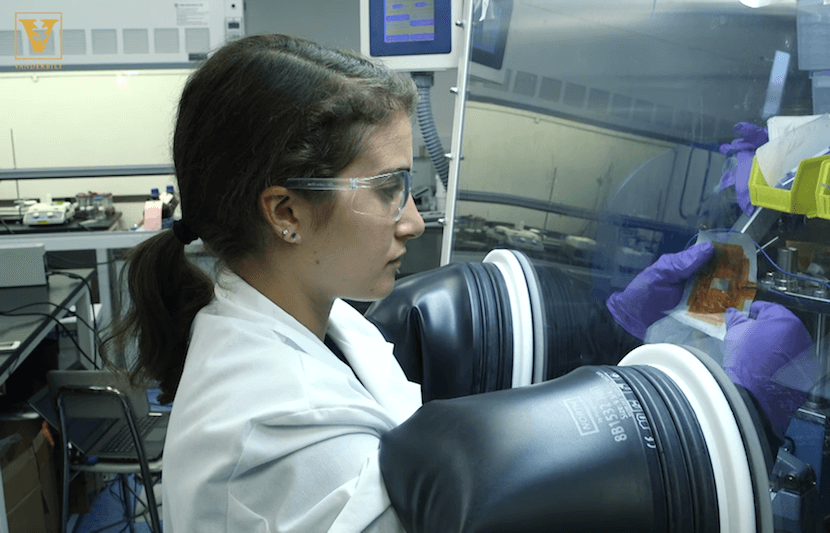Every movement made by a human being expends energy. Specifically, movement of any part of the body requires our muscles to convert glucose (our body’s main source of fuel) into kinetic energy (movement). The most common processes of generating usable electricity convert the kinetic energy of moving water, wind, internal combustion engines, or steam into electrical current. This raises the question — can we somehow harness the existing kinetic energy of daily human motion to generate renewable energy? Dr. Cary L. Pint, assistant professor of mechanical engineering at Vanderbilt University, has the answer.
Pint and his team of graduate students have created a prototype energy harvesting device that’s small enough and thin enough to be sewn into existing textiles and fabrics without any impact on the comfort or aesthetic of the clothing. The device is made entirely of black phosphorus, and generates electricity whenever it is bent, pressed on, or vibrated. If one were to imbed this device in an article of clothing, the wearer’s every action — walking, typing, high-fiving — would produce electricity. The total power output of this prototype device is enough to power a small LCD screen. The device is so lightweight that one wouldn’t even be able to tell it was a part of their apparel.
This prototype device can harvest energy at frequencies less than 10 hertz (the standard electrical frequency range of human movement). Part of the importance of this prototype device, and what has hindered the development of this kind of technology, is that it is notoriously difficult to harvest energy at frequencies of less than 100 hertz.
The technology was inspired by Pint’s study of the effects of compression, extension, and contortion of battery materials like lithium. This research, which showed that the voltage of a battery will increase when the battery is under physical tension and decrease when it is under pressure, demonstrates that small amounts of kinetic energy could be converted into electricity by certain materials. In a sense, this prototype energy harvester operates much like a battery, but instead of generating electricity via chemical reactions or storing electricity from another source, it converts motion into electricity.
There is more to this device than just power generation, however. Pint foresees this technology being utilized in the field of medicine to monitor patients’ health and shorten recovery time for injuries, as well as in sports, to maximize the efficiency of an athlete’s training.
Pint is very optimistic about the future of this technology. “I believe the future in energy systems will be defined based on how we can integrate energy technology into the modern infrastructure of materials and systems that we as humans have grown comfortable with,” he told The University Network (TUN). “Smart fabrics are a big part of this vision since fabrics are such an integral part of our everyday life…. I envision… a ‘cloud’ for energy that is enabled by small-scale energy generation or harvesting systems all around us connected with energy depots that wirelessly charge our mobile devices or portable systems. We’re seeing the birth of this technology infrastructure today.”
When asked by TUN where he saw this field 20 years down the road, Pint replied: “I see a fascinating and unpredictable world of technology where we generate and transmit energy at speeds and with the finesse that we generate and transmit information and data today.”
Pint’s vision of a future powered by renewable energy is not one in which a single “holy grail” source of clean electricity is relied upon on; rather, it is one in which maximum energy efficiency is reached by every possible source of power being capitalized upon.



